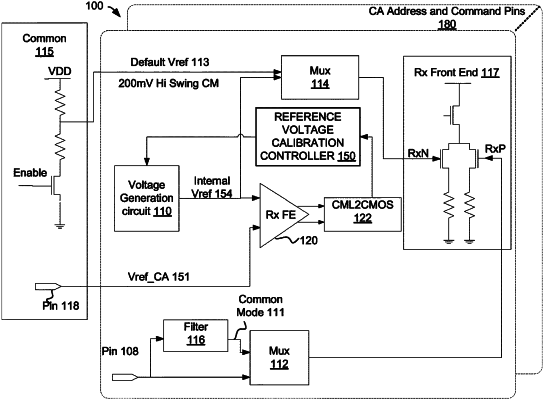| CPC G06F 13/1668 (2013.01) [Y02D 10/00 (2018.01)] | 20 Claims |

|
1. A method of operation in a flash integrated circuit (IC) memory device having an array of memory cells, the method comprising:
initializing an interface to receive control, address and data signals, wherein, at boot-up, the interface is operable to receive, using an internal reference voltage, signals having a first voltage swing at a first signaling frequency;
receiving a clock signal;
receiving a first command using the clock signal, wherein the first command specifies calibration of the interface during a calibration mode, wherein the calibration mode is used to calibrate the interface to operate at a second signaling frequency and receive signals having a second voltage swing, wherein the second voltage swing is smaller than the first voltage swing and the second signaling frequency is higher than the first signaling frequency; and
the interface, during the calibration mode, receiving a calibration pattern at the second signaling frequency.
|